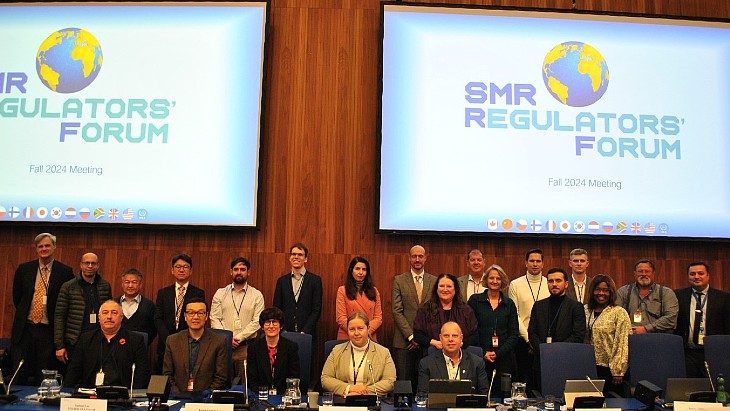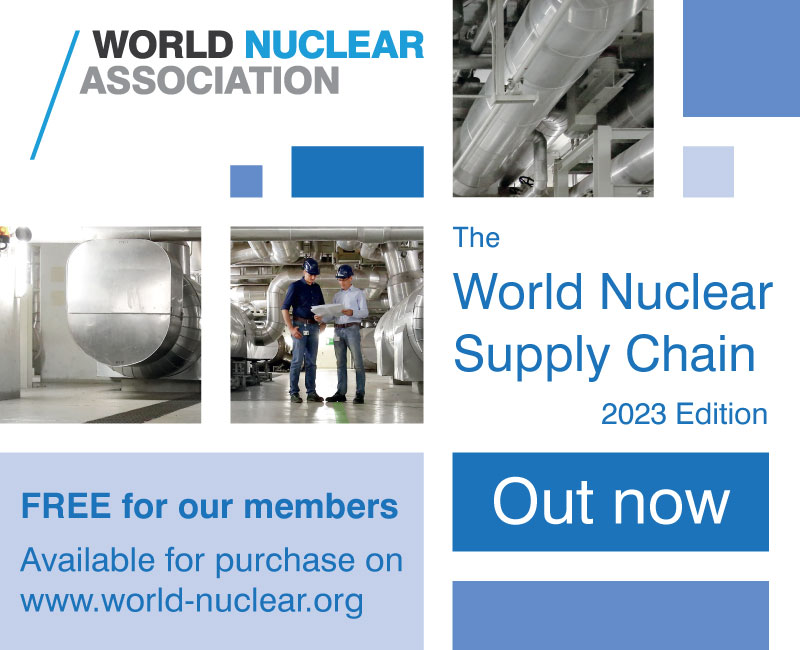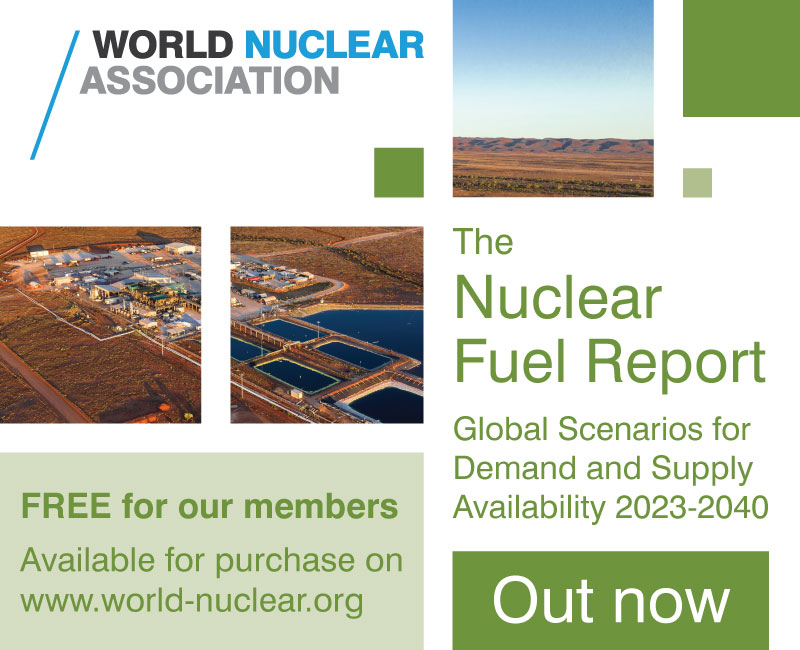Project to demonstrate hydrogen production using IMSR
.jpg)
The two-year research and development project will examine the efficiency, design and economics of using the IMSR to produce carbon-free, industrial-scale hydrogen using the hybrid sulfur process. Terrestrial suggests this method of generating hydrogen from water may be more efficient than high-temperature steam electrolysis. The project aims to demonstrate the commercial and industrial-scale viability of pairing the hybrid sulfur process with an ISMR plant for large-scale production of hydrogen with zero greenhouse gas emissions.
Terrestrial said the project will build on two decades of research at Savannah River National Laboratory, which will lead the technology development along with Sandia National Laboratories and Idaho National Laboratory.
Molten salt reactors use fuel dissolved in a molten fluoride or chloride salt which functions as both the reactor's fuel and its coolant. This means that such a reactor could not suffer from a loss of coolant leading to a meltdown. Terrestrial's IMSR integrates the primary reactor components, including primary heat exchangers, to a secondary clean salt circuit, in a sealed and replaceable core vessel. It is designed as a modular reactor for factory fabrication, and could be used for electricity production and industrial process heat generation. Terrestrial aims to commercialise the modular reactor design - which can produce 400 MWt (190 MWe) of energy - in the 2020s.
"By combining forces with an energy leader such as Southern Company, we can bring this revolutionary technology to industrial markets," said Simon Irish, CEO of Terrestrial Energy USA. "Using an IMSR power plant to produce hydrogen more efficiently and economically is just one of many industrial applications of IMSR power plants beyond electricity generation."
He added, "Removing carbon from the production of hydrogen helps bring deep decarbonisation into reach. It points the way to the production of carbon-neutral transport fuels and zero-emissions fertilisers."
According to Terrestrial, besides current uses of hydrogen in ammonia production, petroleum refining, chemicals production and other industrial applications, hydrogen is expected to grow significantly as a storable energy carrier. Future applications include all forms of transportation, thermal energy and energy storage, as well as growth in conventional uses of hydrogen. It says the market for hydrogen is expected to reach USD200 billion by 2020.
Noah Meeks, research engineer and project manager at Southern Company, said: "This is a potentially high-impact project that couples the benefits of molten salt reactors with the development of an advanced water-splitting process for hydrogen generation."
In June 2017, Terrestrial began a feasibility study for the siting of the first commercial IMSR at Canadian Nuclear Laboratories' Chalk River site. In March this year, Terrestrial and US utility Energy Northwest agreed a memorandum of understanding on the terms of the possible siting, construction and operation of an IMSR at a site at the Idaho National Laboratory in southeastern Idaho.
_92619.jpg)
_84504.jpg)











